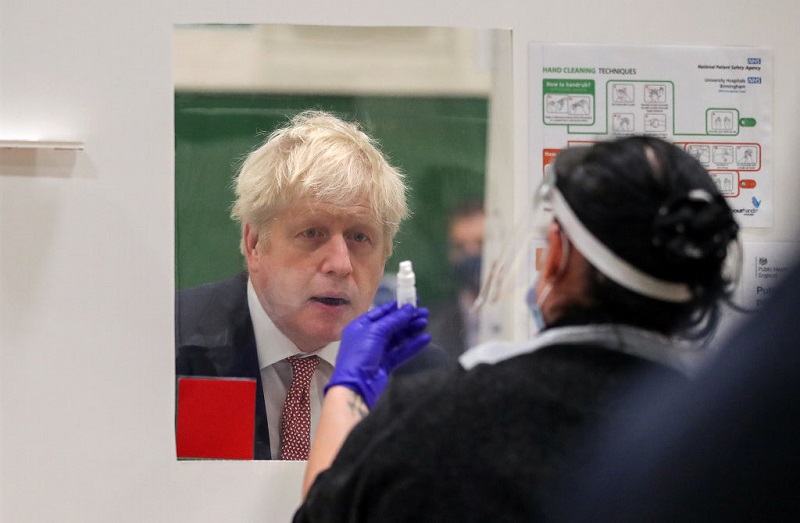Solutions based on artificial intelligence (AI) have been supporting all branches of industry for many years and have been secretly accompanying us in the most banal everyday activities. Supercomputers with enormous computing power and entire data centers clustered in public and private clouds solve thousands of complex mathematical problems and operations every day. So why didn’t they predict the current pandemic? Why didn’t they help us stop it?
They did predict it.
Works on the use of algorithms, based on artificial intelligence, has been predicting the possibility of a pandemic for many years, whilst models developed by researchers have been used effectively in the fight against infectious diseases, thus limiting their development. An example of such activity are the achievements of AIME company (Artificial Intelligence and Medical Epidemiology), which since 2012 has been conducting research on the possibilities of using AI to predict the course of infectious disease epidemics. In 2017, the models, trained on a huge amount of data, reached 86% effectiveness in predicting the locations where the Zika and dengue virus outbreaks occurred within the following three months.
- Read also: America After the Election: What are the Consequences for Poland and the Countries of the Region?
Bill Gates TED Talk in 2015 is known primarily among people who consider the COVID-19 a global conspiracy. In fact, it is impossible not to notice similarities between the course of the current epidemic and the hypothetical super-virus pandemic described by Gates in his speech. He did not come up with this scenario on his own. On the basis of historical data and algorithms based on them, the AI generated a model predicting almost identical scenario as the one we are dealing with today.
They did help.
In the first months of the COVID-19 pandemic, Dario Gil, the Director of IBM Research, reached out to the Office of Science and Technology Policy (OSTP) through his White House contacts with a concise question: “How can we help?” Many parties offered their assistance. The US Department of Energy (DOE), which owns most of the world’s most powerful supercomputers, NASA, academic computer networks, Amazon Web Services, AMD, BP, the D. E. Shaw group, Dell, Google, HP, Microsoft, Nvidia and Intel = they all wanted to help. An association aiming at bringing together massive computing resources was established. Currently, 43 members of the COVID-19 HPC Consortium (High Performance Computing) provide scientists with over 600 petaflops (50,000 GPUs and 68,000,000 virtual processors) of computational power. This is not the only such initiative. The F@h (Folding@Home) project, which has been supporting scientists in developing new drugs by using computer simulations carried out on voluntarily shared resources since 2000, has also started to fight the pandemic. Every owner of a computer, smartphone and even a game console, after installing a special application, can make the device’s computing resources available to scientists. During the current pandemic, F@h has gained in popularity, and thanks to the involvement of thousands of people, a total computing power amounted to 2.43 exaflops (2.43×1018) in the first half of 2020. For the sake of illustration, this is roughly as much as the computing power of 480 million processors used in office computers.
- Read also: Russian drilling in the Antarctic
Many of the problems associated with the current epidemic have been solved using artificial intelligence. The developed models of virus spread allowed to predict where new hotspots may appear. Simulations based on the acquired data allowed the governments of many countries to take effective countermeasures, limiting the spread of the virus. Implemented solutions helped to track COVID-19 carriers and effectively predict the new outbreaks. Forecasting models have identified and continue to recognize the most vulnerable regions, people and countries, effectively predicting the forthcoming number of infections in any location in the world. This allows the health services to take appropriate preventive measures in advance.
In many countries, the burden on health professionals has been partly relieved by the artificial intelligence, which has taken over some of the doctors’ duties. The process of identifying potential COVID-19 carriers has already been improved. Furthermore, algorithms which diagnose the disease with extraordinary effectiveness on the basis of chest X-rays have been developed. The technologies used in, among others, the aforementioned F@h initiative, assisted in identifying drugs that help to treat patients with COVID-19. For example, clinical trials of Relaxifen would not have started without the Exscalate4CoV (E4C) project, a consortium of European companies and institutions, including the International Institute of Molecular and Cell Biology in Warsaw (IIMCB). Without the help of computers and artificial intelligence the process of searching for drugs would have been significantly prolonged. The procedures related to creating and testing the vaccine would also take years, instead of months. The help of AI brought us the last phase of vaccine testing within a year after the pandemic outbreak.
Artificial intelligence not only predicted the current crisis, but also proved to be helpful in treating COVID-19 patients and continuously monitoring their health. AI facilitates drug research by analyzing huge data sets, which exceed human capabilities. The ultimate victory over the virus will only be possible through the human-AI cooperation.
Author: Wiktor Sędkowski
Wiktor Sędkowski graduated in Teleinformatics at the Wrocław University of Science and Technology, specialized in cybersecurity field. He is an expert on cyber threats. CISSP, OSCP and MCTS certificates holder. Worked as an engineer and solution architect for leading IT companies.



